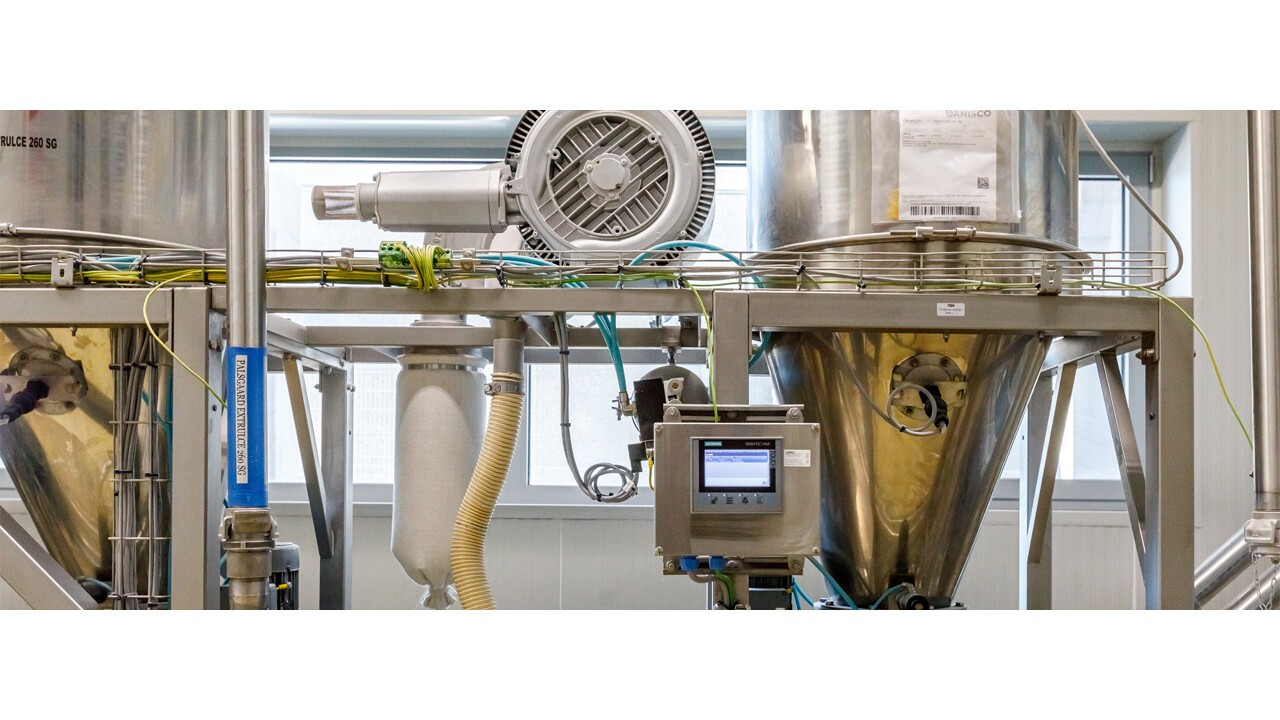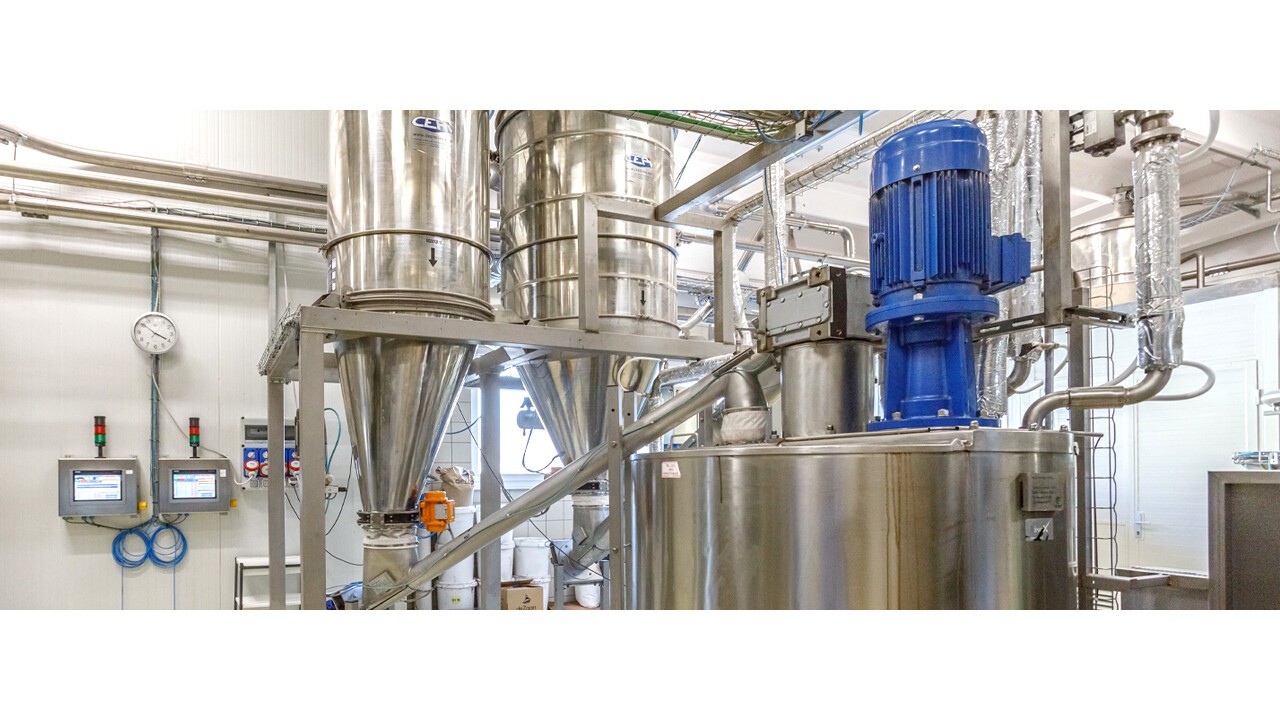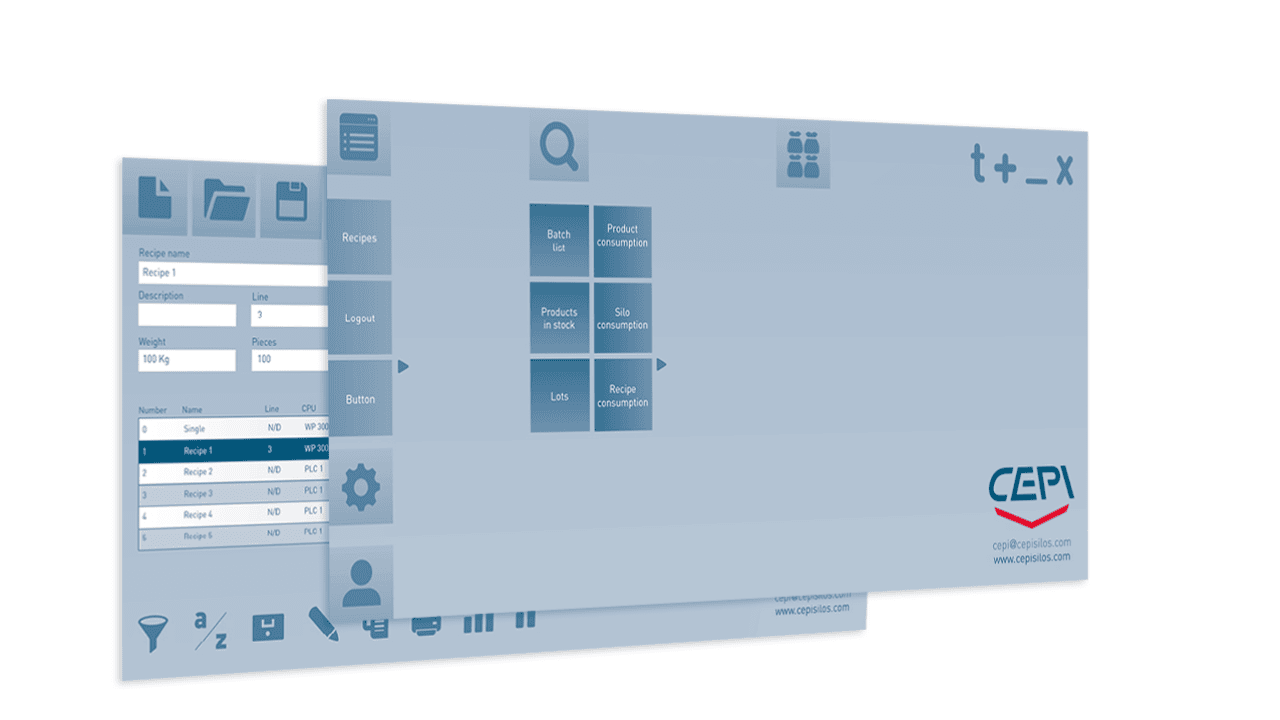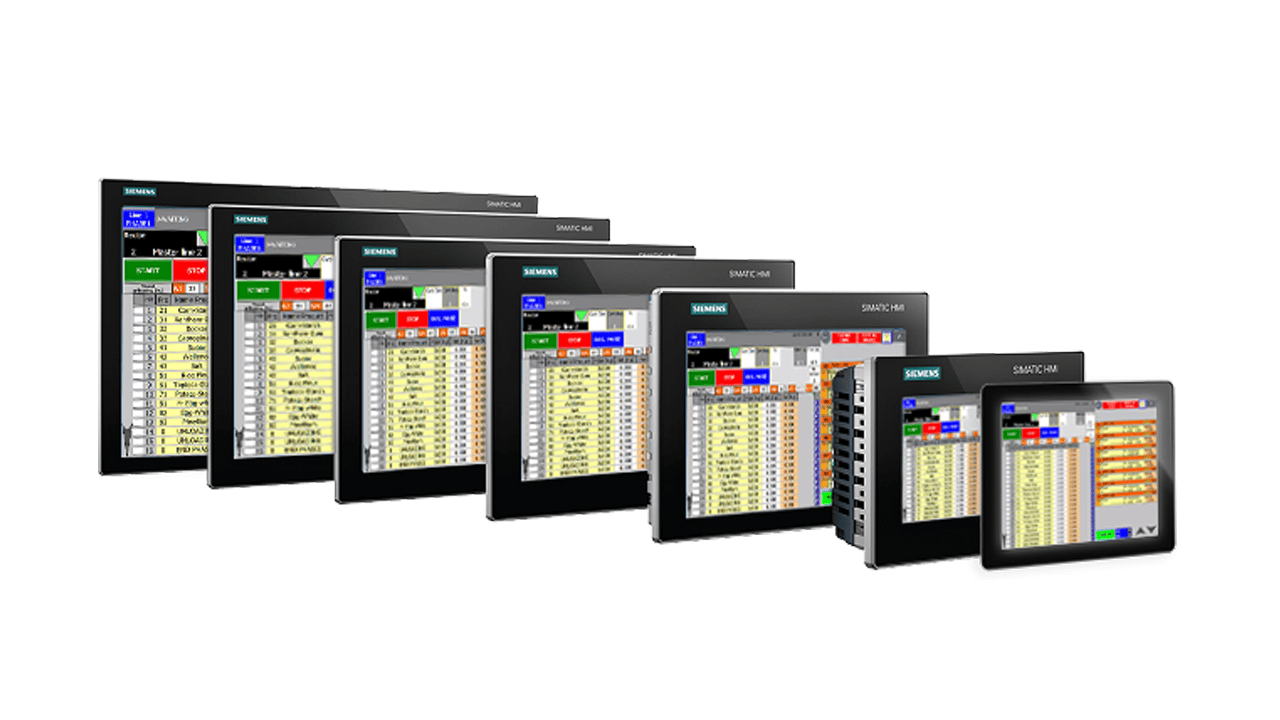Product-Highlight iba 2023
Scalable and customizable automation
We provide fully customized bulk-handling systems, which includes the integrated automation of all operations, including multiple PLC solutions with HMI for the complete management of production and Tracking System software providing process control, warehouse management and full traceability.
-

-

PLC with HMI managing dosage of minor ingredients -

PLCs with HMI managing the dosing line -

CEPI Tracking System: process control, traceability, warehouse management and full integration global ERP or MES -

Customized 4-15’’ touch panels including touch panel program on tablet
Emiliano Leonardi is Head of Electric and Electronic Automation at CEPI. With almost three decades of experience in Electrical Engineering, Emiliano is with CEPI since 1998 and saw the automation department grow with him. He oversees all automation processes in our installations, as well as electric panel design and systems engineering. Today, his team is composed of 18 developers and provide total support to a worldwide network of food manufacturers. Emiliano is committed to sharing knowledge, and his developers are trained to be interchangeable, that is, equally able to take on any project at any time. He strongly believes that the continuity CEPI offers in all areas including assistance is one of our main strengths.
Integrated automation
CEPI is a provider of fully customized bulk-handling systems, which includes the integrated automation of all operations, including multiple PLC solutions with HMI for the complete management of production and Tracking System software providing process control, warehouse management and full traceability. Hardware and software design is done completely in-house. With a team of 24 programmers working on automation and software design, we are able to provide technical and human continuity through the development of a project that can become very specific and complex.
The automatization of the dosing system governs all operations from the loading of storing stations to conveyance and dosing, including all processes such as fermentation and control on parameters such as temperature, pH, atmosphere, which is crucial in preserving the properties of ingredients such as flour or fats. The recipe is managed exactly in the way indicated by the customer: we only provide accurate automation and the most suitable dosing technology, as well as our expertise in how to optimize the management of various ingredients. We do not overturn their product or their process.
In CEPI, it is our mission to provide a turn-key solutions, that is, solutions that make the user independent. In practice, in our systems the processes are covered from storing to dosing, and we support any materials and processes the user wishes to include due to a very diversified technological offer. We already possess internally all expertise needed to design, build and commission the system, and finally we provide the automation and all the data related to the operations run by the system.
Turn-key systems
Designing a dosing system is a complex process that requires a close analysis of the manufacturer’s processes and detailed information that goes beyond the purely technical. Our process involves all departments from warehouse, to production, technical, purchasing and marketing, to include projection of future productions and create a system that will easily accomodate future developments and expansions.
Our systems are based in long term thinking in order to create the most flexibile solution for each food manufacturer and not preclude any new path they may take in the future. As such, they are very easy to revamp, which contributes to the already high circularity of our product, where equipment have a long life and are mainly built in stainless steel. As well as this, we guarantee continuity with a stable PLC based system that is very standardized and adaptable, therefore ready to follow all changes and future additions. Our automations are also designed to optimize all processes, leading to the minimization of energy and material consumption.
The automation system is developed in parallel to the mechanical one. It’s very scalable and customizable, specific down to the single utility. We do not offer pre-ready packages as it is our firm belief that food manufacturers should not adapt to our solutions but rather the opposite. We automate through a recipe that includes every technological step of production, including all dosing and mixing phases, their order and where they should happen.
This detailed study translates into a system that ensures not only repeatability and accuracy of recipe but also traceability of all materials and processes, higher efficiency and production volumes, reduced consumptions and pollutions, improved working conditions and less human error as well as enhanced communication with other software and ERP. Our systems make productions more hygienic, with total separation between production and warehouse and optimize space in both areas.
Scalable and customizable automation: what does it mean?
We provide multiple PLC solutions. Our customized 4-15’’ operator panels can be developed on Siemens or Allen Bradley platforms, and handle recipe creation and management, ingredient and hopper parametrization, synoptic overview with real time status and maintenance of utilities with manual command, loading of silos and other stations, as well as any other functions like washing and climatization. Weighing control in real time is provided for all our storing and dosing stations, along with the management of all other variables involved such as temperature and pH.
All our dosing systems are built on a recipe matrix with automation modules which includes commands regarding weight, temperature, number of batches and production cycles for each step. Steps include both dosing and unloading of ingredients. This kind of automation provides a recipe that is adaptable to each production and can be written in the way that is most suitable to its technological and logistic requirements.
The recipe is written on a table which allows to select fully parametrized ingredients for each chronological step, and to establish the quantity that will be dosed, the temperature of the dosing and the duration. The number of cycles and batches can also be included, as well as unloading steps for each ingredient. A congruence check is performed on each step: that the product is within the established range, that each product comes with an unloading step and so on.
Planning the dosing method
Starting with the raw materials involved in the production, we first analyize each ingredient’s technological properties and their monthly and yearly consumptions, to establish their criticalities, advantages and if they allow optimizatios. We use this information to make decisions regarding the dosing method, such as that best matches the ingredient, the quantities that should be dosed in each batch and the overall production volume.
The set-up recommendations we share with our customers depend on the selected dosing method, the recipe itself, the type of ingredient (powder or liquid), the relevance of the ingredient (quantity and frequency of dosing).
Continuous dosing is selected when the downstream technological process requires it as the material flow itself is continuous and stations are not emptied and the filled discreetly. This goes for pasta lines, for micro ingredients such as additions to flour that are dosed through screws or rotary valves, for crystal sugar mills, or situations with a mill downstream of the flour or a minor addition must be made during pneumatic conveyance.
Batch dosing is the most common and applies to the majority of hoppers: addition or subtraction weighed hoppers, flow meters and micro ingredients hoppers. Of course large and small quantities require different mechanical solutions, and we provide stations for micro, medium and macro storage and dosage depending on the quantity and frequency of dosing.
Depending on the type of production, a single or multiple hoppers will be selected. For bakery lines we often recommend a single hopper for sugar and flour, while biscuits and similar products require the separation of ingredients such as powders, water, liquids like oil or yeast, and various micro inclusions on separate hoppers and flow meters, as the ingredients have different requirements, mixing times and separation allows hoppers to work in parallel and optimize production times.
Processes that require successive unloading and mixing of separate ingredients will also require multiple hoppers, as well as rework systems where a hopper is necessary to dose the recovered powdered or liquid product.
Tracking the flow of materials
Our software provides process control, warehouse management and full traceability with digitalization of all material movements. Our customers receive a complete picture of the production process in real time: we provide them with a history of storing and dosing operations, consumption statistics, batch report and related deviations, stock visualization and dynamic graphics illustrating all trends. Ingredients are monitored starting from the moment they enter the warehouse, carrying a virtual label through all production which adds new information every time an operation is performed on the ingredient.
All our data can be easily integrated with global ERP or MES to achieve organization-wide traceability. Our process control software is open, and the information is immediately available for the user, who can use it however they decide. Because we develop our software completely in-house, we are not bound to any third party and therefore our customers are not either.
On top of this, the data can be used in as many ways as the customer wants. They can quickly carry out mass production balances, check consumptions, generate information for Quality Control and Purchases, create projections of future productions and optimize the current process. Data on the tolerance and queue of dosing processes can be used to check the status of the equipment and determine if it requires maintenance.
Ingredients are monitored starting from the loading moment:
- through our software when they enter the warehouse, when a first digitalization with codebar happens attaching a virtual label to the lot with product loading time, name, quantity, expiration, packing slip, supplier, and anything else the manufacturer deems necessary. This ingredient is now available for dosing in production, and the information will be carried through the dosing process, while also being made available for any other traceability software operating in the factory
- a second digitalization with codebar happens when the lot is loaded into dosing. All the information attached to the lot’s virtual label is carried through the production, now including new info such as loaded weight, loaded units (bags, bowls and such) and loading time. We also perform a congruence check to verify that each ingredient is transferred into the appropriate silo
- our software receives a history of production operations from our own touch panels, which manage such operations on the lines, making information available for all dosing and unloading operations of each ingredient lot, including all stations and conveying systems it moves through
All this information is stored on SQL server and can be exchanged.
Latest developments
As mentioned, the recipe management we provide is very integrated and includes all technological processes in a single recipe, which means all dosing and mixing steps (inclusive of different mixing speeds, mixing in changing locations, cooling, creaming and so on.) Not only that but we manage processes such as the washing of the dosing systems (for example through Clean In Place), which means we can provide a record of the batches, that is full traceability.
Recently, we have developed a very complex automation for an Italian biscuits producer whose process includes more than thirty hoppers for each line for more than 20 ingredients. All of this is managed by a single integrated recipe with more than 60 ingredients.
Another development regards the complete bidirectionality of data between management and production, with easy options to export all data histories required by ERPs and also manage production orders directly, becoming an interface between ERP and production. All production programs can be run remotely.
Learn more by visiting our webiste: www.cepisilos.com/automation/
Emiliano Leonardi
Electric and Electronic Automation Director